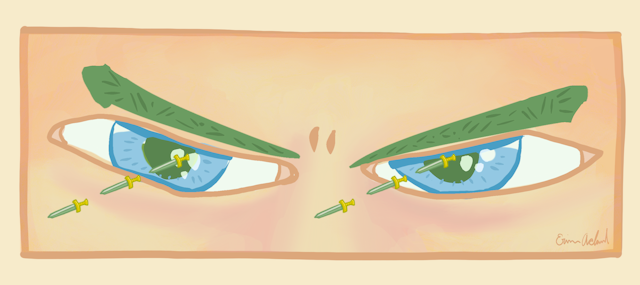Anger is evoked from being harmed or having a goal blocked; those who experience severe, chronic challenges and trauma tend to experience more anger. If channelled into productive activities — such as addressing injustices through whistleblowing, activism and legal action — anger can fuel extremely positive changes in society.
Anger can also be adaptive in hostile environments, as it can make people more sensitive and confrontational to potential threats. However, perceiving benign interactions as attacks and routinely escalating conflicts can cause unnecessary harm to both the perpetrator and the target, creating a cycle of anger and destruction.
Controlling anger may be especially difficult for youth as their impulsivity and ability to regulate emotions are not fully developed, which in part explains why violent crime tends to peak during the teen years.
Results from a recently published study by criminal justice scholar Caitlin Cavanagh and I showed that justice-involved youth who reported experiencing more anger in the preceding few months were more likely to be currently violent. However, they were not at greater risk of reoffending within two years (violently or non-violently).
This is contrary to findings from other researchers that employed shorter follow-up recidivism periods (those who reoffended within one year or less). This could mean that general anger is related to short-term violence and offending, but is not linked to long-term conduct problems.
However, we did find that specific features of anger may be important for long-term criminality in youth.
The rise and fall of anger
Each episode of anger can be thought of as a wave, which includes a rise and fall.
The rise refers to how rapidly anger emerges after a challenge; someone with a short fuse can make others feel like they need to walk on eggshells as not to set them off. The fall refers to how long someone stays angry. Experiencing long bouts of anger can be caused by intrusive thoughts, ruminating on anger-inducing events and difficulty physiologically calming down.

Long, stewing anger can intensify feelings and foster fantasies of violence, which would explain why prolonged anger has been tied to serious offences.
For example, male parolees with violent histories experience prolonged anger, but not shorter fuses, when compared to a community sample. In our study, we found that youth who had a history of violent offences who also reported prolonged anger were twice as likely to reoffend. Prolonged anger may therefore be related to serious patterns of offending that have the potential for violence.
On the other hand, we found that having a short fuse is related to continuing a pattern of non-violent offending in youth. Poor self-regulation is related to quick tempers in children, and impulse control improves as youth age. Less serious, non-violent youth offenders also tend to stop offending by early adulthood. Therefore, these persistent short fuse, non-violent youth may eventually stop offending as they get older.
So, there may be two youth anger profiles that are about twice as likely to reoffend: prolonged anger, serious offenders, and short-fuse, non-violent offenders.
The first represents a brooding youth capable of violence who also tends to engage in non-violent offences (like stealing). The second represents an easily angered youth who tends to act on their emotions with little forethought — but may grow out of it. Further research is still needed to replicate and build on the limited findings in this area.

Taming the beast within
Knowing how youth are feeling and what causes those feelings is necessary for effectively managing anger. Once youth understand their anger, they can work on strategies that avoid triggering it, how to de-escalate it and how to address maladaptive thought processes that fuel it, like, “everyone is out to get me.”
These strategies can be very effective; a meta-analysis showed that completing a cognitive behavioural therapy anger management program — which focuses on reducing the frequency, fuse, duration and intensity of anger — resulted in 42 per cent lower risk of reoffending, and 56 per cent lower risk of violently reoffending.
One strategy that common sense tells us should work, but actually doesn’t, is physically releasing anger, that is, catharsis. It’s true that aggressively acting out anger can lead to immediate reductions in arousal, but it is also known to increase later aggression.
For instance, researchers found that instructing participants to hit a punching bag while thinking about a provocation was tied to more later aggression towards the provoker. So catharsis, as an anger coping mechanism, may reinforce that aggression. It is a good way to feel better but can worsen social and anger issues.
Lastly, not all violence is thought to be motivated by anger. Cold, calculated types of youth aggression are not tied to elevated daily levels of anger — instead they are uniquely related to a lack of concern for others’ suffering. There is plenty we still don’t understand about how anger influences behaviour, but luckily, there are effective strategies available to help manage it when it becomes a problem.

